
Plenty Global



Mixing as a discipline has evolved from foundations that were laid in the 1950s, culminating in the publication of works by Uhl and Gray (1966) and Nagata (1975). Over the last 30 years, many engineering design principles have been developed, and design of mixing equipment for a desired process objective has become possible. This handbook is a compilation of the experience and findings of those who have been most active in these developments. Together, the authors’ experience extends over more than 1000 years of research, development, and consulting work. This book is written for the practicing engineer who needs to both identify and solve mixing problems. In addition to a focus on industrial design and operation of mixing equipment, it contains summaries of the foundations on which these applications are based. To accomplish this, most chapters have paired an industrialist and an academic as coauthors. Discussions of theoretical background are necessarily concise, and applications contain many illustrative examples. To complement the discussions, a CD ROM is included which contains over 50 video clips and animations of mixing processes. These clips are accompanied by explanatory text. Internal cross-referencing and external references are used extensively to provide the reader with a comprehensive presentation of the core topics that constitute current mixing practice
Different Types of Mixers
Convective blenders function at a short mixing period. Some industries prefer this type because it works much faster than the others. But the thing is, it is less practical for diffusive operations. Physically, they are firm, resolute shelves with an impeller – a tool that rotates at a speed rate – such as paddle, plow or ribbon. Mixers that classify under this category are ribbon blenders, paddle blenders, and vertical screw blenders – via movement, they transmit heat.
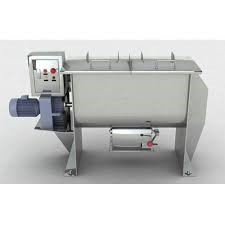
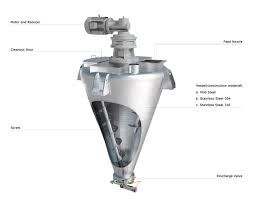
Examples of tumbler mixers are v-shape blender, double-cone blender, and slant blender. They utilize air in mixing or blending, upstream or downstream. Tumbler mixers help in filling, mixing, sealing and storing materials inside the tank so that cross-contamination and double-handling of the products would be prevented.
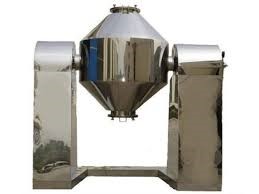
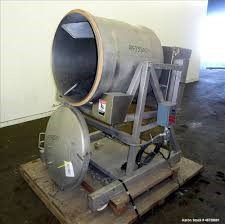
The process of mechanical fluidization involves particle division and perturbation through impingement. A rotating element is used to cause turbulence and rapid churning among the materials within the tank. They move through the solids as if they were hydrous substance. Items include plow and double-paddle mixers. Fluidization blenders are also used for wet and dry mixing, slurry mixing, and even high viscosity liquid mixing.
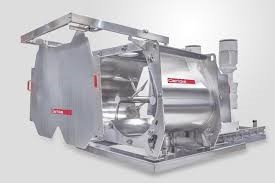

From the name itself, we know it would cause extreme shaking and disturbance. This is agitators’ way of mixing, emulsifying, and so on. They are outstanding in combining one liquid with another – especially the so-called ‘immiscible’ substances. Agitators also disseminate gases into liquids. They suspend solids into aqueous materials as well and enable heat transfer. Commonly, agitators release a centrifugal force from a central agitating blade. These agitating rods may be stationary or removable. On the other hand, this type of mixers does not do a highly efficient job when dealing with viscous or thick materials.

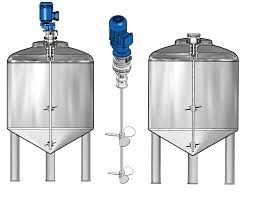
Emulsifiers are famous in processing mayonnaise, pharmaceutical creams, ointments, etc. Choosing the right vacuum emulsifier will save you lots of money, effort and time for your business. Whether inline mixers, static machines or stand-alone equipment, blending cream and milk as well as water and oil will be successful with these type of mixers.
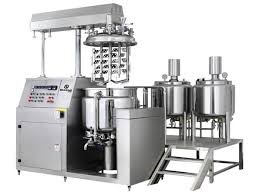
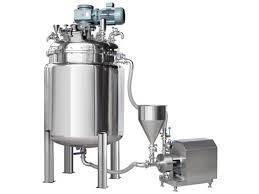
Homogenizers aim to produce a homogeneous substance out of mixing a heterogeneous liquid with another liquid. They do this by impingement – radical force and strong pressure. Materials are broken down and blended completely afterward. Homogenizers contain shearing blades positioned at a vertical axis that work rapidly inside an enclosed container.

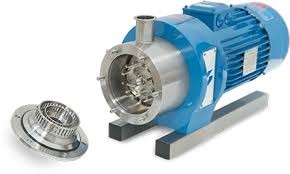
Among all others, this type has a broad selection of mixers. One of which is the portable drums mixer. It can be utilized for ‘in-container’ mixing. Meanwhile, other mixers that belong to this type are designed with their own containers where materials can be gushed into.
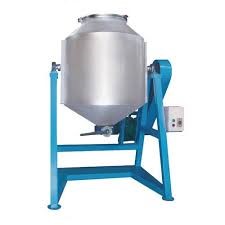
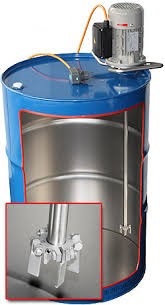
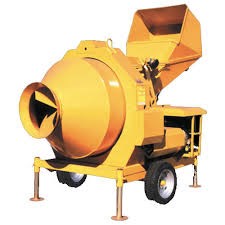
The static mixer enables you, next to controlled mixing, to improve the heat transfer within heat exchanging processes. The use of these mixer elements in tube heat exchangers provides, especially in applications where viscous liquids need to be cooled, a significant improvement to the heat transfer, which means a more compact heat exchanger can be constructed. For applications where a short residence time and a minimal residence time spread play a role, compact design has big advantages.
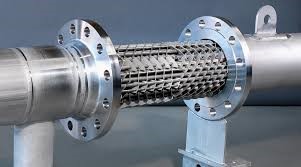
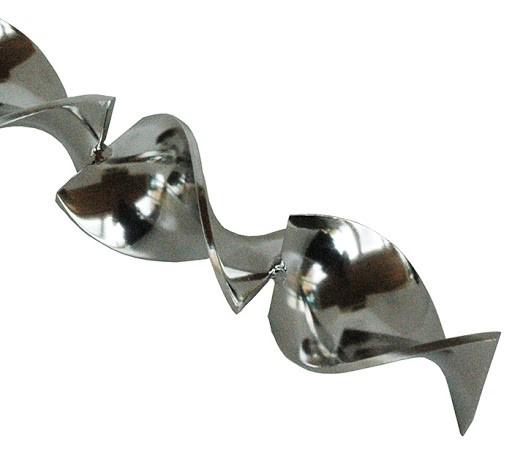
The advent of rotor/stator mixers revolutionized mixing technology. Imparting vigorous radial and axial flow patterns and intense shear, High Shear Mixers accomplish a variety of processing objectives including homogenization, emulsification, powder wet-out and deagglomeration.
High Shear Mixers are used throughout many industries, including the pharmaceutical, food, cosmetic, ink, adhesives, chemicals and coatings industries. For challenging applications, also offers advanced rotor/stator configurations: Ultra High Shear Mixers capable of producing very fine emulsions and dispersions that traditionally require processing in an expensive colloid mill or high pressure homogenizer.Available in batch and inline designs, many popular laboratory and production models are available from stock.
How the ultra high shear lnline models workOur Ultra High Shear Models include the Quad,X Series or MegaShear Designs. The units include four stage or greater rotors that turn at speeds to 15,000 feet per minute within a stationary stator. As the rotating blades pass the stator, they mechanically shear the contents.
This series is a good choice for process lines that require frequent changeover from one product to another. A simple valve can divert finished product downstream or switch instantly from one vessel to another. The Inline models are supplied in many sizes and materials of construction from 10 through 250 horsepower.

Used throughout nearly every process industry, Multi-Shaft Mixers are robust and versatile. Available in a variety of configurations, as either dual shaft mixers or triple shaft mixers depending on batch characteristics, Multi-Shaft Mixers accommodate a flexible range of shear input and viscosities up to several hundred thousand centipoise. The mixer's basic design consists of two or more independently driven agitators working in tandem to ensure fine solids dispersion, efficient turnover and uniform heating/cooling.A characteristic advantage of Multi-Shaft Mixers over typical single shaft devices is that they are closed systems and thus offer benefits in vacuum mixing. A simple dual shaft mixer design consists of a saw-tooth disperser blade enabling fast powder wet-out and dispersion, while the two or three-wing anchor supplies a steady exchange of materials from different parts of the vessel. In triple shaft mixers, a high shear rotor/stator head is typically utilized in addition to the disperser and anchor for high-viscosity emulsion applications.
The Dual Shaft Mixer includes an Anchor agitator and a High Speed Disperser.The anchor feeds product into the high speed disperser blade and ensures that the mixture is constantly in motion. The anchor can be provided with scrapers to remove materials from the interior vessel walls to enhance the heat transfer capabilities of the mixer. Both agitators are available for variable speed operation.A second high speed dispersion mixer can also be added for increased shear. Multiple blades on each of the disperser shafts can also provide added mixing.

We offer Dual and Triple Shaft designs to meet the specific requirements of each customer. The economical Dual Shaft design includes a two-wing anchor agitator and a conventional high speed disperser. This combination is ideal for straight forward mixing and dispersion applications.The triple shaft design extends the operating range by adding either a high shear rotor-stator mixer or a second high speed disperser. The addition of a high shear rotor-stator mixer adds the capability of emulsifying and homogenizing products that require higher shear to reduce the size of the particles being mixed.
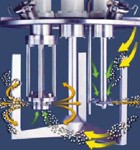
The change-can Double Planetary Mixer (DPM) was a revolutionary invention introduced by in the early 1940's. As its name implies, the DPM consists of two identical blades that move in a planetary motion, rotating on their own axes as they orbit a common axis. In only 36 revolutions around the vessel, the two blades pass through every point in the product zone, physically contacting the entire batch. Its ability to turnover thick, sticky or putty-like materials with great efficiency makes the DPM a standard workhorse in many industries. When mixing high viscosity products upwards of 2 million centipoise (cP), the blades impart a kneading action to the batch, smoothing out its consistency and breaking up any agglomerates.Over the decades, ushered in a series of design developments, extending the capabilities of the original Double Planetary Mixer. The introduction of High Viscosity Blades raised the maximum viscosity range to around 6 million cP -- a number of applications that previously required sigma blade kneaders are now mixed in Double Planetary Mixers offering better cleanability, smaller footprint and lower capital cost.
Our PowerMix Planetary Disperser (PDM) answered the need for shear in formulations that do not reach high enough viscosities where kneading can be effective. Designed for even greater shear intensity and faster solids dispersion, our newest addition to the planetary mixing line of industrial mixers -- the Planetary Dual Disperser (PDDM) -- delivers unparalleled processing power for new generation batteries, adhesives, composites, pharmaceuticals, coatings and chemicals.
AgitatorIndustrial agitators are machines used in industries that process products in the chemical, food, pharmaceutical and cosmetic industries, in a view of:
Industrial mixers are rotating machines that are used to mix and homogenise two or more products with different or equal phases inside a tank, creating a flow between the liquids or between liquids and solids so as to obtain other products already mixed and homogenised for the following purposes:
Solid-liquid mixturesSoluble powders: dissolution & homogenizing.
Non-soluble powders: maintaining in suspension, homogenizing & dispersion.
Liquid-liquid mixturesMiscible liquids: maintaining in suspension, homogenizing & dilution.
Inmiscible liquids: emulsion.
Complex rheology of viscous mixturesMaintaining in suspension, dissolution, homogenizing, dispersion, heat transfer & grinding
Every industrial mixer consists essentially of an engine, a reduction gearbox, a drive shaft, and a driving part designed according to the characteristics of the products and the needs of the mixture.
Agitator Rang
The selection of the type of agitator to be used stems from the analysis of a certain number of parameters related to each process:
Type of mixing and position.
Axial flow rotors.
Radial flow rotors.
Mixed flow rotors.
Rotors for dispersion and emulsion.
Geometry of the tank (dimensions, type of assembly).
Rotation speed (related to the intensity of the mixing).
Mixing intensity (related to the speed of rotation).
Physical conditions imposed by the process (pressure and temperature).
Different types Of Agitators
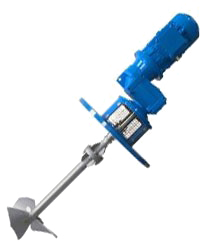
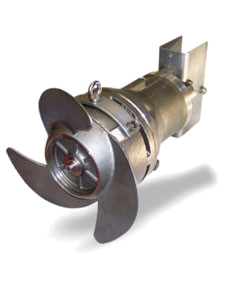
The reactor agitators type are the most powerful agitators compared to the others in product range. Large sized agitators with a drive power of up to 3,500 kW, shaft lengths of more than 15 m, as well as 500 mm shaft diameters, have already been supplied. These agitators have been designed to grant highest operational safety and fulfill all valid DIN-standards to the greatest possible extents. The robust design as well as the easily and quickly replaceable mechanical seal ensure minimal maintenance costs and low operational costs.

| Motor Power | 5 - 3500 kW |
| Shaft Diameter | 40 - 500 mm |
| Operating Pressure | Vacuum - 200 bar |
| Impeller-Systems | EKATO high-efficiency impellers and conventional impellers |
| Materials (product wetted) | Carbon steel, rust- and acid resistant steels, nickel-base alloy, Duplex- and Super Duplex steels, titanium und titanium alloys, rubber coatings, coatings |
| Approval | ATEX 2014/34/EU & GOST TR-ZU 010/2011 approval |
Industrial agitators are designed for a wide range of volumes and pressurized or unpressurized vessels. The unit can either be directly driven by a motor or together with a gearbox. A connection of the motor via IEC-adapter or a gear motor are also possible. The shaft can either be sealed by a mechanical seal or other seal types.
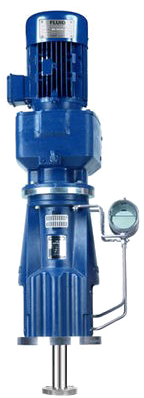
| Motor Power | 0,75 – 75 kW |
| Shaft Diameter | 40 - 120 mm |
| Operating Pressure | Vacuum - 12 bar |
| Impeller-Systems | EKATO high-efficiency impellers and conventional impellers |
| Materials (product wetted) | Carbon steel, rust- & acid resistant steels, nickel-base alloy, Duplex- & Super Duplex steels, titanium & titanium alloys, rubber coatings, coatings |
| Approval | ATEX 2014/34/EU & GOST TR-ZU 010/2011 |
Compact agitators are designed for open vessels or those which have a low pressure. Their robust design and excellent smoothness when operating make them extremely reliable, even when mixing media with high solid contents. Further advantages are the low overall height and the modular design which ensure maintenance at low cost and an easy modification of the agitator, if necessar
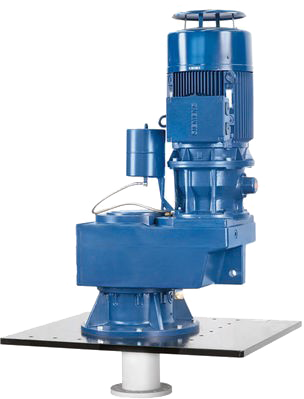
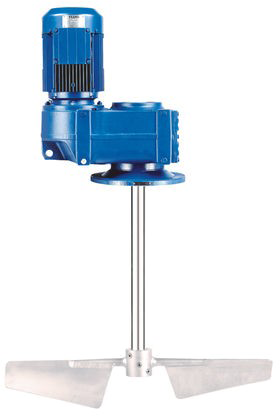
| Motor Power | 0,75 - 400 kW |
| Shaft Diameter | 40 - 800 mm |
| Operating Pressure | Atmospheric – 4 bar |
| Impeller-Systems | EKATO high efficiency impellers and conventional impellers |
| Materials (product wetted) | Carbon steel, rust- & acid resistant steels, nickel-base alloy, Duplex- & Super Duplex steels, titanium & titanium alloys, rubber coatings, coatings |
| Approval | ATEX 2014/34/EU & GOST TR-ZU 010/2011 |
These type of agitators are designed for small volumes and pressurized vessels. The unit can either be directly driven by a motor or together with a gearbox. A connection of the motor via IEC-adapter or a gear motor are also possible. The shaft is sealed by a mechanical seal.
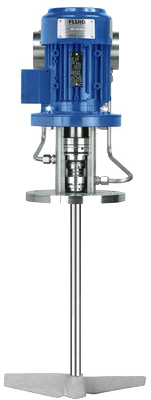
| Motor Power | 0,37 – 7,5 kW |
| Shaft Diameter | 25 - 40 mm |
| Operating Pressure | Vacuum - 7 bar |
| Impeller-Systems | EKATO high-efficiency impellers and conventional impellers |
| Materials (product wetted) | Rust- & acid resistant steels, nickel-base alloy, Duplex- & Super Duplex steels, titanium & titanium alloys |
| Approval | ATEX 2014/34/EU & GOST TR-ZU 010/2011 |
The allrounder agitators compact standard agitators are allrounders. A connection of the motor via IEC-adapter or a gear motor are possible.

| Motor Power | 0,37 – 7,5 kW |
| Shaft Diameter | 25 - 40 mm |
| Operating Pressure | Atmospheric |
| Impeller-Systems | EKATO high-efficiency impellers and conventional impellers |
| Materials (product wetted) | Carbon steel, rust- & acid resistant steels, nickel-base alloy, Duplex- & Super Duplex steels, titanium & titanium alloys, rubber coatings, coatings |
| Approval | ATEX 2014/34/EU & GOST TR-ZU 010/2011 |
Drive version directly driven by motor or together with a helical gearbox including a gear pin
Coaxial agitators are high performance units equipped with two universal impeller systems each with an independent drive system. All kinds of mixing tasks arising in the different process steps such as homogenizing, suspending, dispersing, heat transfer as well as the decomposition of solids, can be combined and performed. This mixing system is preferred for complex mixing processes and products with extreme viscosities and flow behaviors. Therefore process steps with different viscosities, from watery substances up to 1 million mPas, can be processed. These agitators are a cost-effective alternative to kneaders and extruders
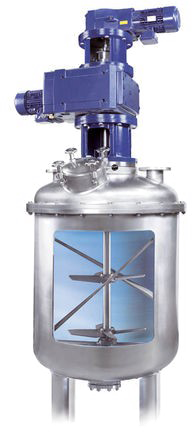
| Motor Power | 5 - 250 kW |
| Shaft Diameter | 40 – 220 mm |
| Operating Pressure | Vacuum - 40 bar |
| Impeller-Systems | EKATO high-efficiency impellers and conventional impellers |
| Materials (product wetted) | Carbon steel, rust- and acid resistant steels, nickel-base alloy, Duplex- and Super Duplex steels, titanium und titanium alloys |
| Approval | ATEX 2014/34/EU & GOST TR-ZU 010/2011 |
These type of agitators with mechanical seal are designed for storage tanks of any size. The shaft is sealed by a single-acting product lubricated mechanical seal. The agitator is equipped with a device to ensure quick and easymaintenance or replacement of the seal, while the vessel is still filled up. A new coupling design allows to service the seal without the need of any lifting gear.
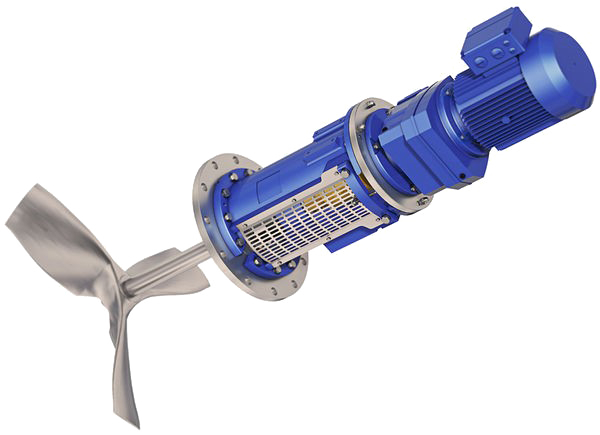
| Motor Power | 1,1 – 15 kW |
| Shaft Diameter | 40 - 60 mm |
| Impeller-Systems | EKATO Propeller |
| Materials (product wetted) | Rust- & acid resistant steels, Duplex steels |
| Approval | GOST TR-ZU 010/2011 approval |
These agitators with mechanical seal are designed for storage tanks of different sizes. The shaft is sealed by a single-acting product lubricated or double-acting liquid lubricated mechanical seal according API 682 4th Edition, modified for agitators. Manual swivelling or optional automatic adjustment control via DCS is available. The agitator is equipped with a device to ensure quick and easy maintenance or replacement of the seal, while the vessel is still filled up.
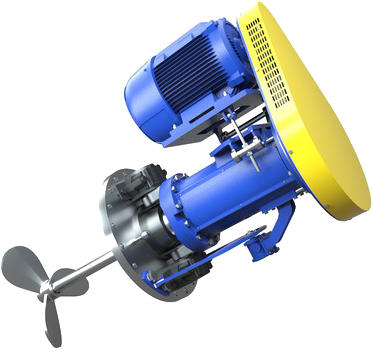
| Motor Power | 5 - 200 kW |
| Shaft Diameter | 40 - 100 mm |
| Operating Pressure | Vacuum -100 bar |
| Impeller-Systems | EKATO high-efficiency impellers and conventional impellers |
| Materials (product wetted) | Rust- & acid resistant steels, nickel-base alloy, Duplex- & Super Duplex steels, titanium & titanium alloys |
| Approval | ATEX 2014/34/EU & GOST TR-ZU 010/2011 |